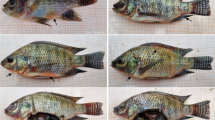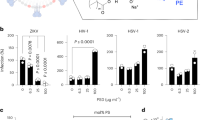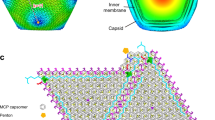Abstract
AN iridovirus and a cytoplasmic polyhedrosis virus have been found as the cause of disease in the freshwater daphnid, Simocephalus expinosus, collected in Florida (Fig. 1). Although both types of virus were originally reported from insects1–3 and are now well known insect virus types4, neither has been reported before from the Crustacea. Iridoviruses have been reported from other invertebrates and from some vertebrates5, however, cytoplasmic polyhedrosis viruses have been reported only from insects.
This is a preview of subscription content, access via your institution
Access options
Subscribe to this journal
Receive 51 print issues and online access
$199.00 per year
only $3.90 per issue
Buy this article
- Purchase on SpringerLink
- Instant access to full article PDF
Prices may be subject to local taxes which are calculated during checkout
Similar content being viewed by others
References
Smith, K. M., and Wycoff, R. W. G., Nature, 166, 861 (1950).
Xeros, N., Nature, 170, 1073 (1952).
Xeros, N., Nature, 174, 562 (1954).
Smith, L. M. Insect virology (Academic, New York, 1967).
Kelly, D. C., and Robertson, J. S., J. gen. Virol., 20, 17–41 (1973).
Mattern, C. F. T. in The biochemistry of viruses (edit. by Levy, H. B.) ch. 2 (Dekker, New York and London, 1969).
Tinsley, T. W., and Kelly, D. C., J. Invertebr. Pathol., 16, 47–473 (1970).
Couch, J. A., Nature, 247, 229–231 (1974).
Author information
Authors and Affiliations
Rights and permissions
About this article
Cite this article
FEDERICI, B., HAZARD, E. Iridovirus and cytoplasmic polyhedrosis virus in the freshwater daphnid Simocephalus expinosus. Nature 254, 327–328 (1975). https://doi.org/10.1038/254327a0
Received:
Revised:
Issue date:
DOI: https://doi.org/10.1038/254327a0
This article is cited by
-
Inapparent infection ofDiatraea grandiosella byHeliothis virescens cytoplasmic polyhedrosis virus
Entomophaga (1992)
-
Viral diseases of marine invertebrates
Helgoländer Meeresuntersuchungen (1984)



